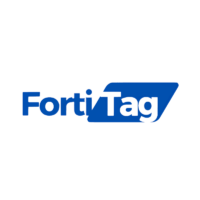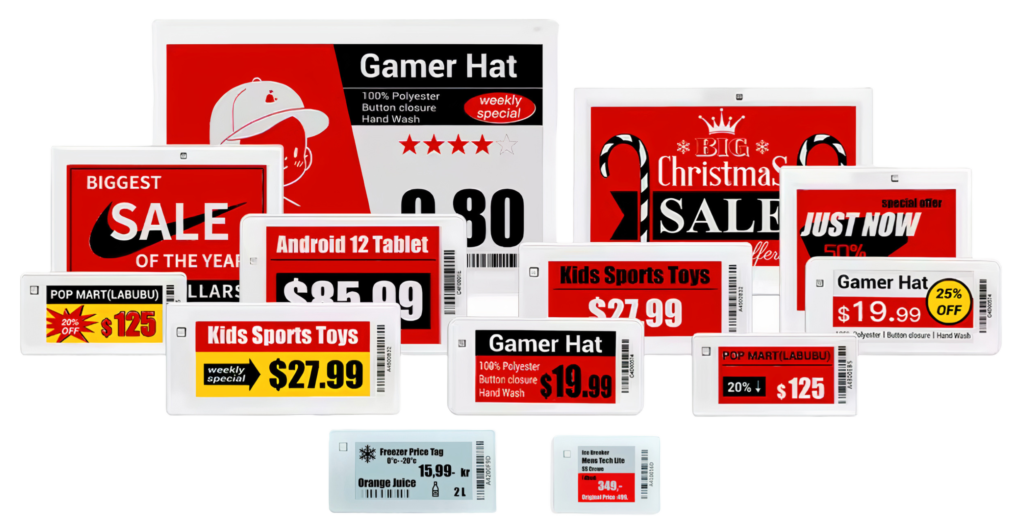Welcome to the future of retail pricing—Electronic Shelf Label (ESLs). These nifty gadgets are transforming how stores display and manage their prices. Gone are the days of manually updating paper tags. With ESLs, prices can be changed in real-time with just a click, making the shopping experience smoother and more efficient for both retailers and customers.
The Evolution of Retail Pricing
Traditional Shelf Labels
Remember the old-school paper tags? They were a staple in retail for decades. However, changing prices involved a labor-intensive process. Each label had to be manually replaced, which was not only time-consuming but also prone to errors.
Transition to Digital Solutions
As technology advanced, so did retail solutions. Digital price displays began to emerge, offering more flexibility and accuracy. This evolution has led us to the modern ESLs, which are at the forefront of retail innovation today.
Understanding Electronic Shelf Labels
Definition and Functionality
So, what exactly are ESLs? Simply put, they are digital tags that display product prices and other information on store shelves. They can be updated remotely and instantly through a centralized system, ensuring that prices are always accurate and up-to-date.
Components of ESL Systems
An ESL system typically includes the following components:
- Digital Labels: These are the tags placed on shelves.
- Wireless Communication: Usually via Wi-Fi or Bluetooth.
- Centralized Management Software: For updating and managing the labels.
Types of Electronic Shelf Labels
Segmented E-Paper Labels
These are the most basic type of ESLs, displaying prices using segments like a digital clock. They are cost-effective and energy-efficient.
Dot Matrix E-Paper Labels
A step up from segmented labels, these offer more flexibility with the ability to display alphanumeric characters and simple graphics.
Full Graphic E-Paper Labels
These are the top-tier ESLs, capable of displaying complex graphics, QR codes, and promotional information. They provide the most flexibility and are ideal for dynamic pricing strategies.
Benefits of Using Electronic Shelf Labels
Real-Time Pricing Updates
One of the biggest advantages of ESLs is the ability to update prices in real-time. This means no more waiting for overnight updates or worrying about price discrepancies.
Cost Efficiency
Although the initial investment might be higher, ESLs save money in the long run by reducing labor costs and minimizing pricing errors.
Enhanced Customer Experience
ESLs can display more than just prices. They can provide product information, promotional offers, and even customer reviews, making shopping more interactive and informative.
Environmental Benefits
By replacing paper tags with digital labels, ESLs significantly reduce paper waste, contributing to more sustainable retail practices.
Technology Behind Electronic Shelf Labels
E-Paper Technology
ESLs primarily use e-paper technology, similar to that found in e-readers like Kindle. E-paper is energy-efficient, with excellent readability under various lighting conditions.
Wireless Communication Protocols
ESLs communicate wirelessly through protocols such as Wi-Fi, Bluetooth, or proprietary radio frequencies. This ensures seamless updates and synchronization with the store's central management system.
Integration with Retail Management Systems
For ESLs to function effectively, they need to integrate with the store's existing retail management systems. This integration allows for automated price updates, inventory management, and data analytics.
Implementation in Retail Stores
Planning and Installation
Successful implementation starts with careful planning. Retailers need to assess their store layout, choose the appropriate type of ESLs, and plan the installation process to minimize disruptions.
Integration with Existing Systems
Integrating ESLs with existing systems is crucial for seamless operation. This involves setting up the necessary software and ensuring compatibility with current management systems.
Staff Training and Adaptation
Introducing new technology requires training staff to use and maintain the system. Proper training ensures that the transition to ESLs is smooth and that the staff can utilize the new system effectively.
Case Studies of ESL Adoption
Major Retailers Using ESLs
Many major retailers, such as Walmart and Carrefour, have successfully adopted ESLs. These case studies show significant improvements in pricing accuracy, operational efficiency, and customer satisfaction.
Success Stories and Performance Metrics
Retailers using ESLs report reduced labor costs, fewer pricing errors, and increased sales. These metrics highlight the effectiveness of ESLs in modern retail environments.
Challenges and Considerations
Initial Investment Costs
The initial cost of purchasing and installing ESLs can be high. However, many retailers find that the long-term savings and operational benefits outweigh these initial expenses.
Technical Issues and Solutions
Like any technology, ESLs can encounter technical issues. Common problems include connectivity issues and battery life concerns. Regular maintenance and choosing high-quality ESLs can mitigate these problems.
Staff and Customer Adaptation
Both staff and customers may need time to adapt to ESLs. Providing proper training and clear information can help ease this transition.
Future Trends in Electronic Shelf Labels
Advances in ESL Technology
ESL technology continues to evolve, with advancements such as color displays, interactive features, and integration with mobile apps. These innovations promise to further enhance the retail experience.
Predictions for Retail Innovations
Looking ahead, we can expect more personalized and dynamic pricing strategies, improved customer interactions, and even smarter inventory management solutions as ESL technology advances.
How to Choose the Right ESL System for Your Store
Assessing Your Store's Needs
Start by evaluating your store's specific needs. Consider factors such as store size, product range, and budget.
Comparing ESL Providers
Research different ESL providers, comparing their products, services, and customer reviews. Look for providers with a proven track record and robust support systems.
Key Features to Look For
When choosing an ESL system, look for key features such as ease of integration, battery life, display quality, and scalability. These features will ensure that the system meets your store's current and future needs.
Cost Analysis of Electronic Shelf Labels
Initial Costs
Initial costs include purchasing the ESLs, installation, and integration with existing systems. While these costs can be significant, they are a one-time investment.
Long-term Savings
ESLs offer long-term savings by reducing labor costs, minimizing pricing errors, and streamlining inventory management.
Return on Investment (ROI)
Many retailers see a positive ROI within a few years of implementing ESLs. The combination of operational efficiencies and increased sales contributes to this return.
Environmental Impact of ESLs
Reduction in Paper Waste
By eliminating the need for paper tags, ESLs significantly reduce paper waste. This is a major environmental benefit and aligns with sustainability goals.
Energy Consumption of ESLs
ESLs are designed to be energy-efficient, often using e-paper technology that consumes power only when the display is updated.
Sustainability Practices in ESL Manufacturing
Many ESL manufacturers are adopting sustainable practices, such as using recyclable materials and minimizing the environmental impact of their production processes.
Contact us
Email: info@fortitag.com
Phone number: +1 (778) 819–2126
Address: 408 East Kent Ave S #108Vancouver, BC V5X 2X7




